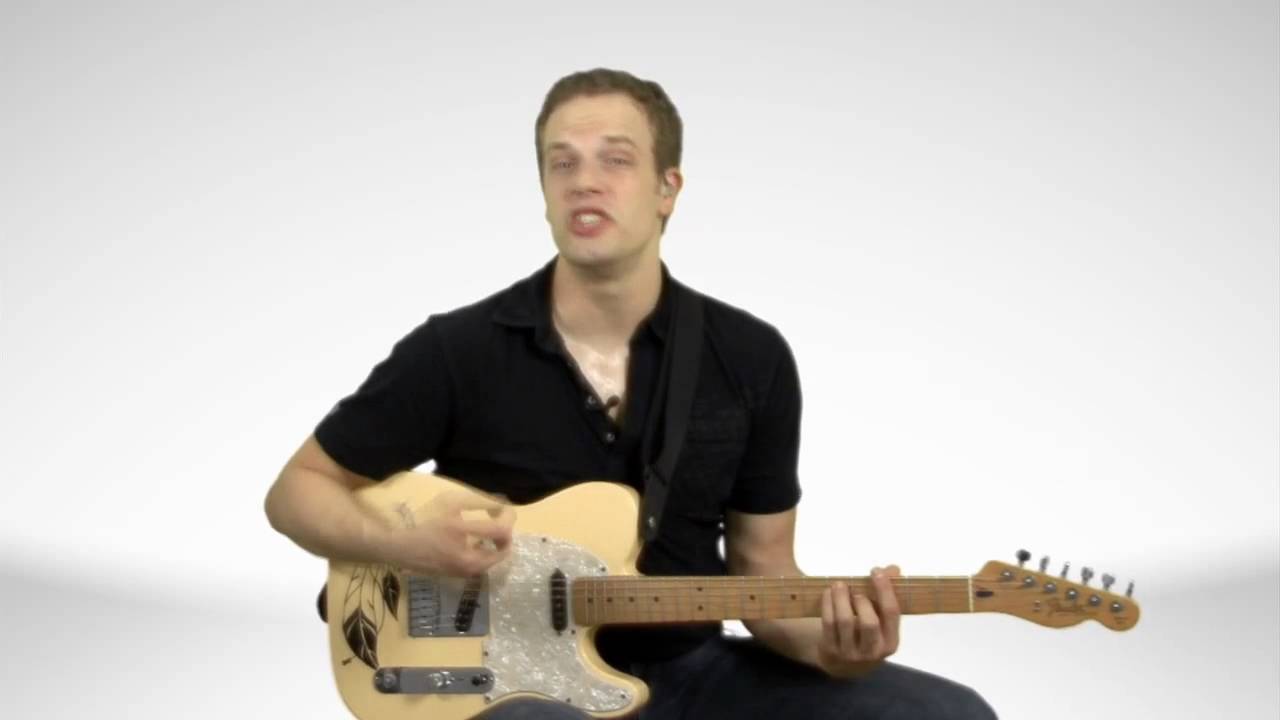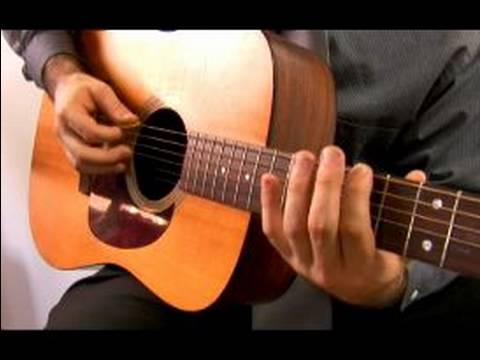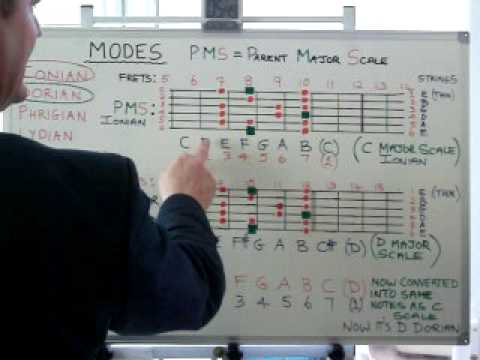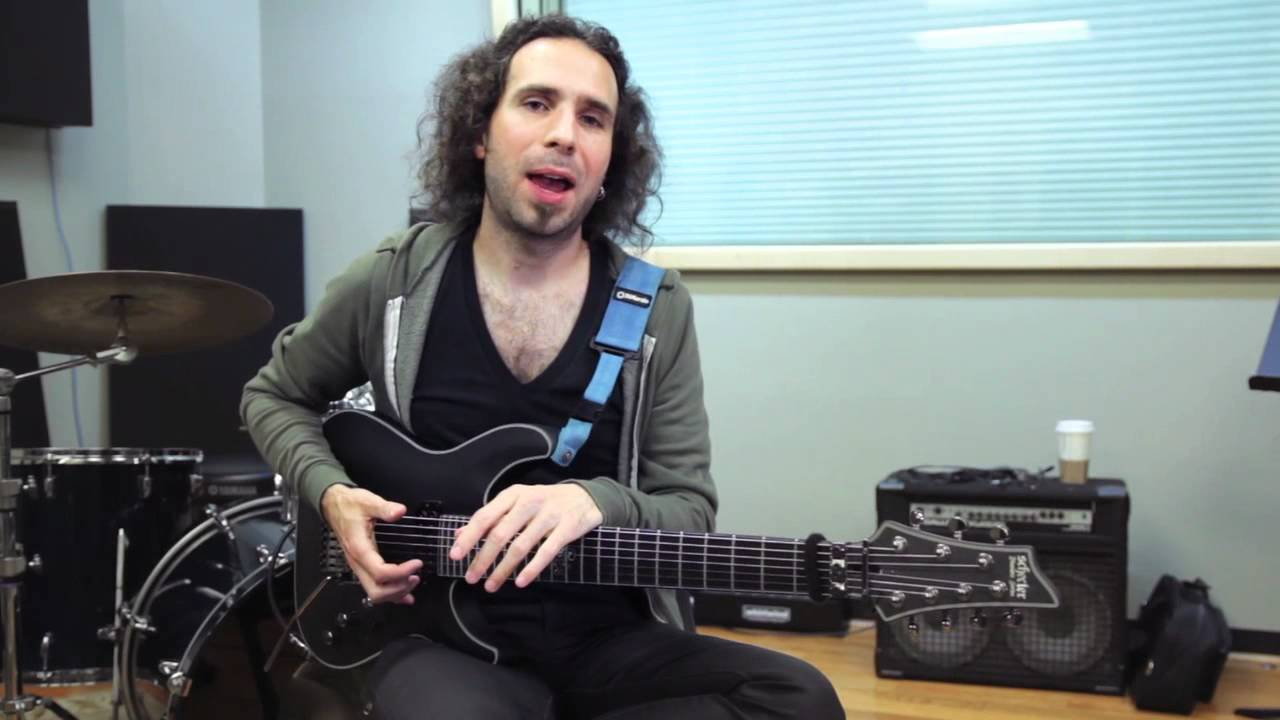www.GuitarLessons365.com Please Rate, Comment, Favorite and Subscribe so this lesson canget more views. THANKS!! This lesson focuses on how to visualize any major scale mode in any key on the fretboard. You will need to read the FREE PDF tutorial “Understanding Modes” available at http in order to follow along. Also, it would be a good idea to watch my “Visualizing Major Scales Pt.1 & 2″ lessons to fully comprehend what I am doing in this lesson. While you are at the main site please check out the tons of other FREE video guitar lessons for players of all levels. Your generous donations at the site is what will enable me to keep these FREE video lessons coming for everyone. THANKS!! Carl.. Lesson Taught By: Carl Brown Video Rating: 4 / 5
You may also like
Introduction To Guitar Modes – Guitar Lesson
Added by Admin 11 years ago
816 Views1 Comments0 Likes
Get instant access to FREE guitar lessons at GuitarLessons.com . Learn how to play the 7 guitar modes in these guitar lessons! This section will run through all seven guitar modes and show a...
Modes & Guitar Solo Techniques: Music Lessons : Playing the Seven Guitar Modes in E Major
Added by Admin 11 years ago
597 Views0 Comments0 Likes
Learn how to play the seven 7 musical guitar modes in the key of E major in this free music lesson on video. Expert: Casey Cormier Bio: Casey Cormier has been playing both the guitar and bass for 10 years. Filmmak...
What Are Modes, How Are They Made, And Why? Easy Lesson Explaining A Complex Subject
Added by Admin 11 years ago
3.96K Views25 Comments0 Likes
What Are Modes, How Are They Made, And Why? Easy Lesson Explaining A Complex Subject. The subject of Modes can drive fear into the most seasoned of Guitarists & musicians but, it need not be...
German Schauss Guitar Quick Tip – “Using Modes on Guitar”
Added by Admin 11 years ago
977 Views1 Comments0 Likes
LAMA Guitar Instructor German Schauss discusses using different modes on guitar. www.lama.edu Video Rating: 4 / 5









If you have a C major scale. Ionion that is… Then the 7 modes for you are E phrygian, F lydian, G mixolydian, A minor, B locrian, C ionion, D dorian. All the notes are the same, its just where you start that makes it a different mode. Just learn the C major scale over all the guitar… and you know all the modes. Takes practice figuring what youll play and how. Just learn licks, and learn why they work for a certain key. Make it make sense for you.
It makes me saaaadd!! I want to be a theory nerd, because I want to get better, and I want to improvise, and learn so much . im crying right now, im melting!!!
 . I wish i had someone to practice with, I’m all by myself, I’m kind of understanding but at the same time I’m not. I already know dorian, Lydian, major scales and minor pentatonic memorized. But i still don’t know how to use it, it kinda seems limiting.. and i want to write many songs, and songs that come out of my head not theory
. I wish i had someone to practice with, I’m all by myself, I’m kind of understanding but at the same time I’m not. I already know dorian, Lydian, major scales and minor pentatonic memorized. But i still don’t know how to use it, it kinda seems limiting.. and i want to write many songs, and songs that come out of my head not theory
What pedal are you using?
also keep in mind guys, it takes a lot of memorization, and learning patterns and cheating patterns. Learning intervals is kind of stupid.. Try learning patterns. Make a picture in your head once you memorize something and just learn to do it in multiple spots. Hes not really telling you what you don’t know. You just need to practice. Please people, just practice memorizing it all in one key, and just learn to move form there. Biggest problem is learning it all on open.
Guys the trick is the memorize it all for one key. How to play all the relative modes… now where your pentatonics are at..Diminished, augmented, Quartals everything… Learn it all in one key… And then after that, learn how to do it in a different key. The trick though is when you learn how to transpose to a different key, Learn your starting postion, and then remember whats near that and move on from there… Takes time. Otherwise, memorize it all from open as well, because its different
E Lydian is always in the key of B because E is the 4th note of the B major scale and Lydian is the 4th mode. E Lydian cannot be in another key because E is not the 4th degree in any other key. Likewise, D Lydian would be in A major because D is the 4th note of the A major scale.
The E Lydian mode is the 4th mode (or sub-scale) of the B Major scale, because E is the 4th note of the B Maj scale. E Lydian, like B Maj, has 7 notes, and can be named according to each note:
F# Mixolydian
G# Aeolian (G# Minor)
A# Locrian
B Ionian (B Maj)
C# Dorian
D# Phrygian
When you start / end on E it is most obvious to your ear that you’re playing in E Lyd, but you don’t have to start or end on E. When you play along with the E drone as suggested in the video it keeps your ear ‘in tune’
Great vids, man. I’m learning a lot.
Just a bit of confusion, is E Lydian always in the key of B? Could you play E Lydian in any other key? Or am I missing something?
thanks mate. i have so much to learn.
yes mate just playing the scale up and down makes you feel like your almost as good as him:)
He wanted to keep it in the “A” region, which meant that he wanted to start the scale near the 5th fret of the E string. The problem with that is is the fact that that would be A natural, which isn’t in the B major scale, so he needed to start on the sixth fret instead since A sharp is in the B major scale.
Its funny how the E lydian sounds kinda like steve vai.
4:55 where did this A sharp came from? ”what kind of A is in B…in the key of A sharp” i didnt understand this. can anyone xeplain?
I agree- I had a go at this and it was confusing to have to relate always back to a major scale that you aren’t playing in anyway! Then I realized that you could apply his method to the mode you want instead i.e. if you want to play E Lydian at the 5th fret, don’t go back to B Ionian, forget that, just count up from E to A (the 5th fret) from LYDIAN, so it’s 4 shapes up: Lydian, Mix, Aeolian,LOCRIAN – so you play the Locrian shape at the 5th fret. Much less confusing..and shorter!
when did BB King ever play a fast lick
Someone who doesn’t know much theory, shouldn’t be learning modes yet then. They should be learning theory.
It depends on the song, but it is very unlikely that you would play all modes in one song. Each mode goes with a certain type of chord. For example, on Major Chords you can play Ionian, and Lydian (sometimes Mixolydian, but it really doesn’t fit). Minor chords would use Aeolian, Dorian, and sometimes Phrygian if you want a really outside bizzarre sound.
Playing modes, is best to go with modal chord progressions, if you want to really use all the modes effectively…
you are correct about the notes, the notes you mentioned are E dorian scale. But there wouldn’t be a need to play that in D Major. Dorian is used on minor chords, so if the song had a minor chord in it , you would use the dorian scale of that minor chord. Example, if the chord order was D, A, Em, G, you would only use Dorian on the Em (E Dorian). The other chords would require other scales or ideas, if you wanted to emphasize them. Message me anytime for more information.
Perhaps the creator of this video, or teacher, could upload a video of them improvising in a certain mode, with music, so we can see how effective his approach is?
Then, once you know the formulas for the mode you want, you just need to know when to play it, which can also start fairly simplified. Ionian and Lydian = Major or major 7 Chords, Dorian = Minor chords or minor 7 chords, Mixolydian = Dominant 7th chords, or just ’7′ chords. If you want to play Phrygian, or Locrian, or Aeolian… master the previously mentioned most common modes first, and then they will be a breeze.
If you learn by referencing what it’s related to all the time, your going to end up sounding like what it’s related to, rather than sounding modal. It’s fairly simple if you know your major scales. Learn the formulas from a Scale syllabus such as the Aebersold scale syllabus, free online. If you’ve gone as far as learning major scales, its not that hard to learn a couple simple formulas instead of all this relation stuff. Mixolydian is a Major scale, with a lowered 7th as another simple example.
This is a very misleading lesson in my opinion. Nothing in it is incorrect, but i would care to see anyone upload a video of them effectively improvising using modes after this lesson.
I’m not sure why it isn’t easier to just learn each mode seperately with a simple formula. Then learn what chord type to play it on.
For example… Lydian is just a Major Scale, with a Raised forth note. So C lydian is C D E F# G A B C. Thats G Major you say? Sure but who cares. Learn C lydian on its own.
If you would like to hear a masterful example of the Lydian mode, listen to Joe Satriani’s ‘Flying in a Blue Dream’.
“Today we’re gonna take a look at how to visualize any mode that you want, in any key…..uh……anywhere on the guitar neck. So…….uh….a few prerequisites for this……uh…….” Speak much boy? Maybe you should learn the talkin befo you get to flapping those wet lips bout imaginary modes and all kinda heathen guitar magic.